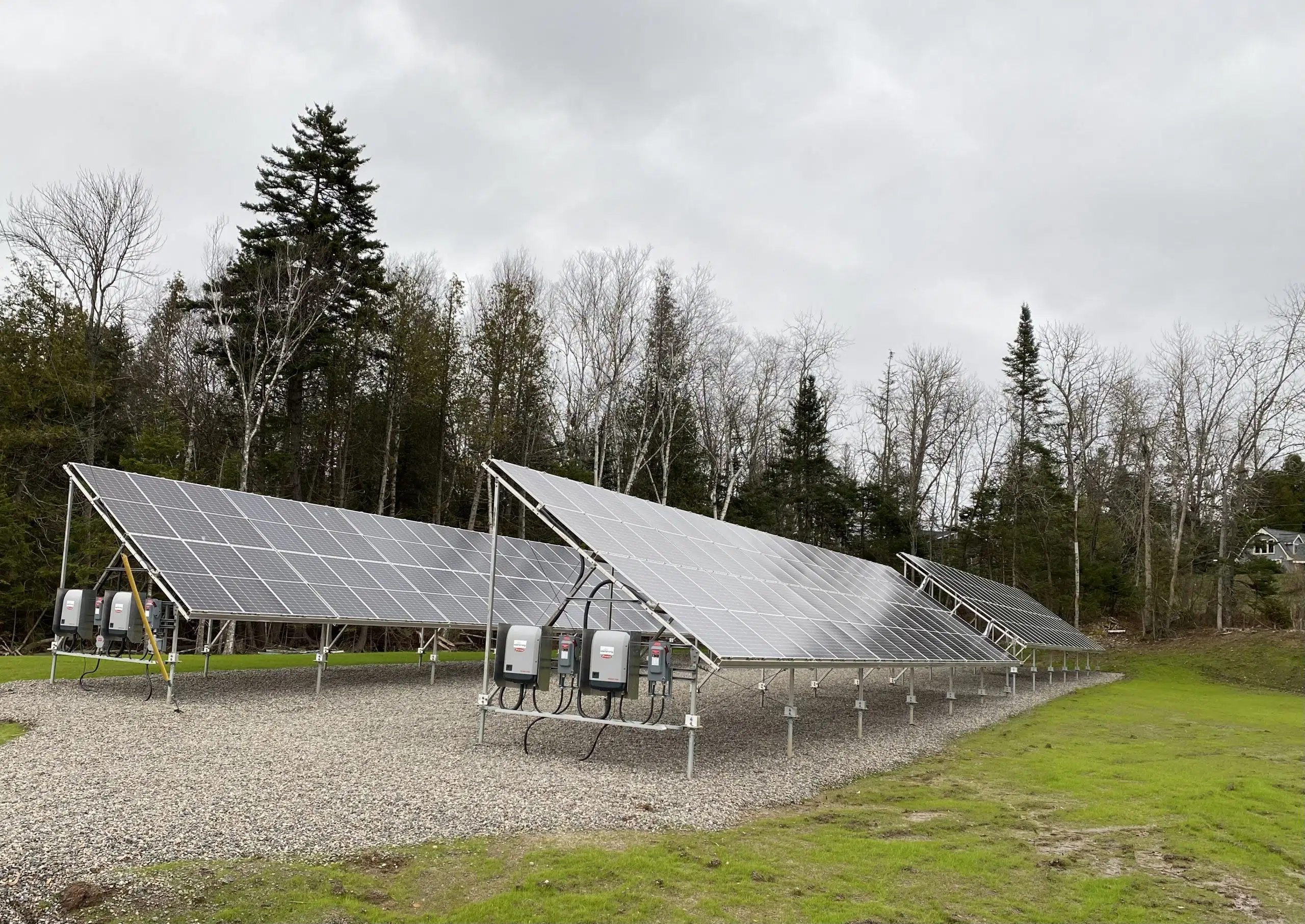The wastewater treatment facility in Grand Bay-Westfield is now using solar energy to produce some of its electricity.
The Solar Array Project at the wastewater treatment facility is part of the town’s strategic priority of Infrastructure and Climate Adaptation and will help the municipality to continue to take action against climate change.
“When you’re a municipality that has been directly impacted by climate change it becomes a priority pretty quickly,” mentioned Brittany Merrifield, mayor of the town of Grand Bay-Westfield.
“Municipalities are basically on the frontlines of climate change, when there’s a flood, hurricane, or any other kind of extreme weather, we’re the ones that have to deal with the infrastructure damage,” continued Merrifield.
In 2018 and 2019, the riverside community went through two “100-year floods” where several roads had to be blocked off, while many homes became the victim of water damage.
“When you see that, and you see how it affects your neighbours, and your family it’s pretty impactful,” Merrifield said.
The town anticipates several positive environmental impacts from the project over its lifetime, such as saving 687,885 kg of carbon dioxide from entering the atmosphere.
In May, the town’s council awarded the Solar Array Project to the Smart Energy Company, which had an estimated price tag of $400,000.
“So, it’s not an insignificant investment, but it’s an investment into the municipality and the region, and also it’s an investment in the fight against climate change,” added Merrifield.
The Smart Energy Company installed four NOREASTER solar arrays at the wastewater treatment facility.
The system, which had some of the components produced in New Brunswick is sized to produce approximately 90,000 kWh or about 40 per cent of the power used by the facility annually, which is the equivalent of removing 28 tonnes of carbon per year.
“The ground-mounted system is manufactured right here in New Brunswick, over the last six years we’ve designed several iterations of the NOREASTER system, we bring in some of the other components from other parts, but the ground-mounted system is all designed and manufactured in Saint John,” mentioned Jeff McAloon, chief revenue officer of the Smart Energy Company.
The NOREASTER system can also operate quite well during the winter, and when it snows.
“Six or seven years ago, we were buying systems outside of the Atlantic Canada region and we noticed they just wouldn’t survive in our climate, and because of storms they were literally falling apart, or they just wouldn’t produce enough energy,” said Mark McAloon, founder, and CEO of the Smart Energy Company.
The panels at the wastewater treatment facility are also double-sided, which allows the system to produce energy on the front and back of each panel.
“That’s unique with this system because it actually helps to reduce the amount of snow that sticks to the front of the solar module,” mentioned Mark.
Also, when it snows, Mark added the Solar Array Project will produce about 10 per cent of what it would produce on a bright sunny day.
The Solar Array Project was officially commissioned on November 16.
Grand Bay-Westfield’s wastewater treatment facility now has solar panels. The Solar Array Project will produce 90,000 kWh or about 40% of the power used by the facility annually. pic.twitter.com/hZNaq1TaoY
— Tim Herd (@timherdradio) November 16, 2022













